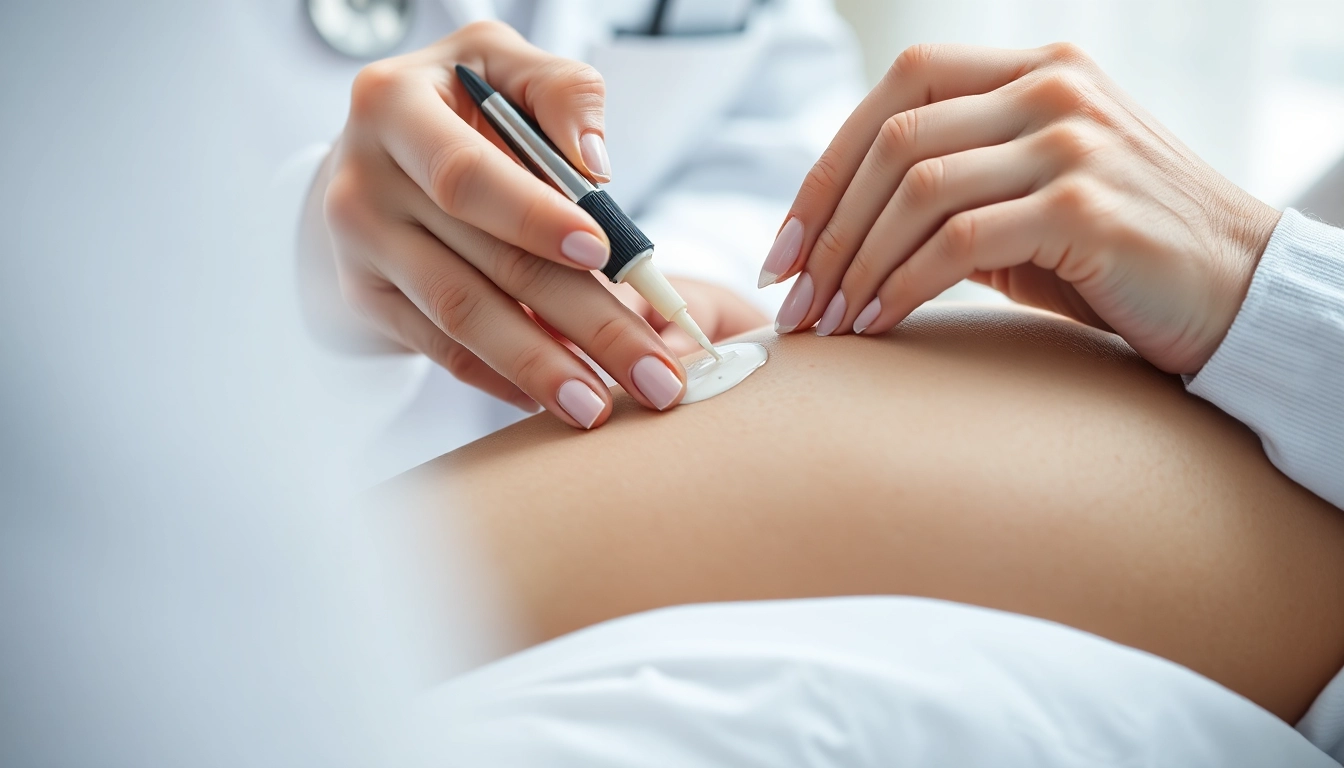Understanding Genital Warts and Their Causes
What Are Genital Warts?
Genital warts are small, flesh-colored or gray growths that occur in the genital or anal area. These warts are primarily caused by certain strains of the human papillomavirus (HPV), which is a sexually transmitted infection (STI). While they can be uncomfortable and distressing, it’s important to note that genital warts are not life-threatening. Their appearance often raises concerns about sexual health, emotional well-being, and social stigma attached to STIs. Addressing genital warts effectively includes understanding their nature, causes, and the available treatment options, including the Best genital warts treatment.
Common Causes and Risk Factors
Genital warts are typically caused by HPV, particularly types 6 and 11, which are classified as low-risk strains. These strains are responsible for the majority of genital wart cases. The primary mode of transmission is through intimate skin-to-skin contact during vaginal, anal, or oral sex with an infected partner. Other factors that might increase the risk of contracting genital warts include:
- Multiple sexual partners: Increased exposure raises the likelihood of encountering an infected individual.
- Weakened immune system: Individuals with compromised immunity due to conditions such as HIV/AIDS or those on immunosuppressive treatments may be more susceptible to HPV infections.
- Smoking: Research indicates that smoking may weaken the immune response, making it harder for the body to clear HPV infections.
- Young age: Young sexually active individuals, especially teens and early 20s, tend to have a higher incidence rate of genital warts due to increased sexual activity without knowledge of risks.
Overview of HPV Strains Associated with Genital Warts
Human papillomavirus encompasses over 200 strains, with around 40 capable of infecting the genital area. Among these, HPV types 6 and 11 are the most common culprits for benign lesions such as genital warts. Many individuals who contract these strains might be asymptomatic and may unknowingly transmit the virus to others. While these strains do not typically lead to cancer, other HPV types, such as 16 and 18, are known to cause cervical and other types of cancer.
Signs and Symptoms of Genital Warts
Common Symptoms to Look Out For
Genital warts may appear within weeks or months of exposure to an infected partner. The symptoms can vary between individuals, and many may remain asymptomatic. Typical signs include:
- Small, raised bumps: These can be solitary or in clusters resembling cauliflower.
- Flat or rough growths: Some warts may be flat or have a rough surface.
- Itching or discomfort: In some cases, individuals may experience itching, irritation, or bleeding, particularly after sexual activity.
- Location: Warts may present on the external genitals, vagina, cervix, anus, or surrounding areas.
When to Seek Medical Advice
If individuals notice growths in the genital area or experience discomfort, it’s essential to consult a healthcare provider. Early intervention can help establish a diagnosis and set a clear treatment plan, as well as alleviate any anxiety associated with the presence of warts. Regular check-ups and screenings are vital to monitor sexual health.
Understanding the Difference Between Warts and Other Skin Issues
It is crucial to differentiate genital warts from other skin conditions that may cause similar symptoms. For example, molluscum contagiosum and herpes simplex virus (HSV) can also lead to lesions in the genital area. An accurate diagnosis often requires consultation with a healthcare professional, who may perform a visual examination or a biopsy if necessary.
Best genital warts treatment Options Available
Topical Treatments and Their Effectiveness
Topical treatments are commonly prescribed for the management of genital warts. These include:
- Imiquimod (Aldara or Zyclara): This immune response modifier is applied directly to the warts. It helps stimulate the body’s immune system to fight HPV and has shown effectiveness in reducing or eliminating warts.
- Podophyllotoxin (Condylox): This topical solution can be self-administered and works by destroying the wart tissue through local toxicity. It is usually applied for three consecutive days, followed by a four-day break.
- Trichloroacetic acid (TCA): A potent chemical applied by a healthcare provider, TCA helps remove warts by burning them off. This method may need to be repeated multiple times for complete resolution.
Procedural Treatments: What to Expect
If topical treatments are ineffective or if warts are extensive, procedural interventions may be necessary. Common procedural options include:
- Cryotherapy: This treatment involves freezing the warts using liquid nitrogen, effectively destroying the tissue. Multiple sessions may be needed.
- Electrosurgery: Using electrical current, this method removes wart tissue and cauterizes the area.
- Laser therapy: A highly focused beam of light is used to destroy warts. This option is generally reserved for larger or persistent warts.
- Surgical excision: For particularly large warts, complete surgical removal might be the best option, ensuring immediate results.
Natural Remedies and Their Validity
Many individuals seek out natural remedies for genital warts, often looking for milder, non-invasive options. Some popular remedies include:
- Apple cider vinegar: Some people report using this acidic solution to help remove warts through application, although its effectiveness is largely anecdotal.
- Garlic: Known for its antiviral properties, crushed garlic has been suggested for wart removal through topical application.
- Tea tree oil: This essential oil is sometimes used for its antiseptic properties, applied diluted to the affected area.
While some natural remedies may provide subjective relief, scientific evidence supporting their efficacy is limited. Consultation with a healthcare provider is recommended prior to trying any alternative treatments.
Preventive Measures Against Genital Warts
Vaccination: Reducing the Risk
Vaccination against HPV is one of the most effective ways to prevent genital warts and other HPV-related diseases, including certain cancers. The Gardasil and Gardasil-9 vaccines protect against the HPV types responsible for the majority of genital warts and cervical cancer.
The vaccine is recommended for preteens, but can be given to individuals up to 26 years old, providing significant protection against the most common and harmful strains of HPV.
Safe Practices to Minimize Transmission
Practicing safe sex is crucial in reducing the risk of HPV transmission. Some effective practices include:
- Consistent use of condoms: While not foolproof, condoms can significantly lower the risk of HPV and other STIs.
- Limit the number of sexual partners: Reducing the number of partners can decrease exposure to HPV, and having fewer partners may simplify partner discussions about health.
- Regular STI screenings: Regular health check-ups for sexually active individuals allow for early detection and management of any STIs, including HPV.
Regular Health Check-Ups: An Essential Habit
Routine health check-ups are essential for maintaining sexual health and early detection of any abnormalities, including warts. Women should ensure to undergo Pap smears as recommended, while men should receive thorough examinations by their healthcare providers. Discussing sexual health openly can help demystify the subject and encourage proactive health management.
Addressing Emotional and Psychological Impacts
Coping with the Diagnosis of Genital Warts
Receiving a diagnosis of genital warts can be emotionally challenging. Feelings of embarrassment, anxiety, or fear may arise due to the stigma associated with STIs. It is vital to remember that genital warts are common and manageable. Engaging in open discussions with healthcare providers can empower individuals and provide reassurance that these conditions can be treated effectively.
Support Systems and Resources
Establishing a support network can be invaluable. Speaking to trusted friends, family members, or partners about one’s feelings can help mitigate emotional distress. In addition, support groups—whether online or in-person—can provide shared experiences and coping strategies that can alleviate feelings of isolation.
Long-term Outlook: Living with HPV and Genital Warts
For many individuals diagnosed with genital warts, the long-term outlook is positive. The body’s immune system often clears the virus over time, and warts may disappear without treatment. Possessing knowledge about HPV and the various treatment avenues can lead to more informed health decisions and empowered living. Maintaining regular medical follow-ups and sustaining safe practices can also ensure healthier sexual interactions in the future.



